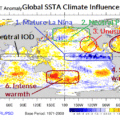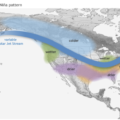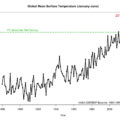
In 2011, volunteers were on hand to educate communities on what to do in extreme weather events.
LUCY CRAYMER
Dow Jones
Exit El Niño: Enter La Niña?
Government forecasters in Japan and Australia have this week strengthened their assessment that a La Niña weather pattern will hit the northern hemisphere this (northern) summer, joining the US in rating it at around a 50 per cent chance.
The possible advent of La Niña poses a fresh challenge for farmers and agricultural markets currently dealing with excess supply of some crops such as wheat due to falling demand, and shortages of others, like palm oil, caused by El Niño-related droughts in recent months.
“Recent changes in the tropical Pacific Ocean and atmosphere, combined with current climate model outlooks, suggest the likelihood of La Niña in 2016 has increased to around 50 per cent,” Australia’s Bureau of Meteorology said.
La Niña, which often follows on the heels of an El Niño event, occurs when easterly trade winds strengthen, cooling water across the central and eastern Pacific Ocean.
That typically brings drier-than-usual weather to some states in the US and South America.
Conversely, it can bring wetter-than-normal conditions for much of Australia, Papua New Guinea, Indonesia and Central America, while increasing the likelihood of tropical cyclones in the Pacific Islands.
La Nina last influenced Australia between 2010 and 2012, with the 2010-11 peak one of the strongest on record, says the Bureau of Meteorology.

Alice Richter-Ward cleans mud from her Brisbane back yard during the January 2011 floods.
Historically La Niña — often termed El Niño’s sister — has offered a significant risk to the production of corn, soybeans, wheat, sugar, cotton and coffee. During years when El Niño transitions to La Niña, prices of such commodities typically rise.
Over the 12 months following the confirmation of the last observed La Niña in July 2010, for example, wheat futures on the Chicago Board of Trade rallied around 21 per cent and soybeans rose around 39 per cent, while the benchmark sugar contract traded in New York surged 67 per cent.
“A potential La Niña weather pattern could significantly damage global grain crops for the 2016-2017 season, spurring more significant price rises across the food complex than we currently forecast,” said analysts at BMI Research in a note.
While there are early signs that a La Niña will emerge this year, accurately forecasting when it will arrive and how severe the impact will be is tricky.
Australia’s weather bureau said forecasts made at this time of year tend to have lower accuracy rates than those made later in the year. The severity of the phenomenon is measured by ocean temperatures and changes in wind patterns.
“There is such a big net short position in agriculture that any step shift would see a pretty dramatic move,” said Adrian Redlich, chief investment officer at Merricks Capital, a Melbourne-based firm that runs a $US350 million soft-commodities fund.
But some investors said any impact on agricultural prices could be muted at a time when demand for key commodities is already relatively weak in major markets like China.
“At this point, grain and edible oil inventories are high, so it would require a significant La Niña weather event for there to be a major impact on pricing,” said James Govan, an investment manager at Baring Asset Management in London.
Moreover, widely-traded commodities like palm oil could see prices fall if La Niña materialises, since wetter conditions are good for oil palm plantations.
Prices for palm oil — used in a range of products from lipstick to cooking oil — have surged to two-year highs recently thanks to crop damage wrought by El Niño.







